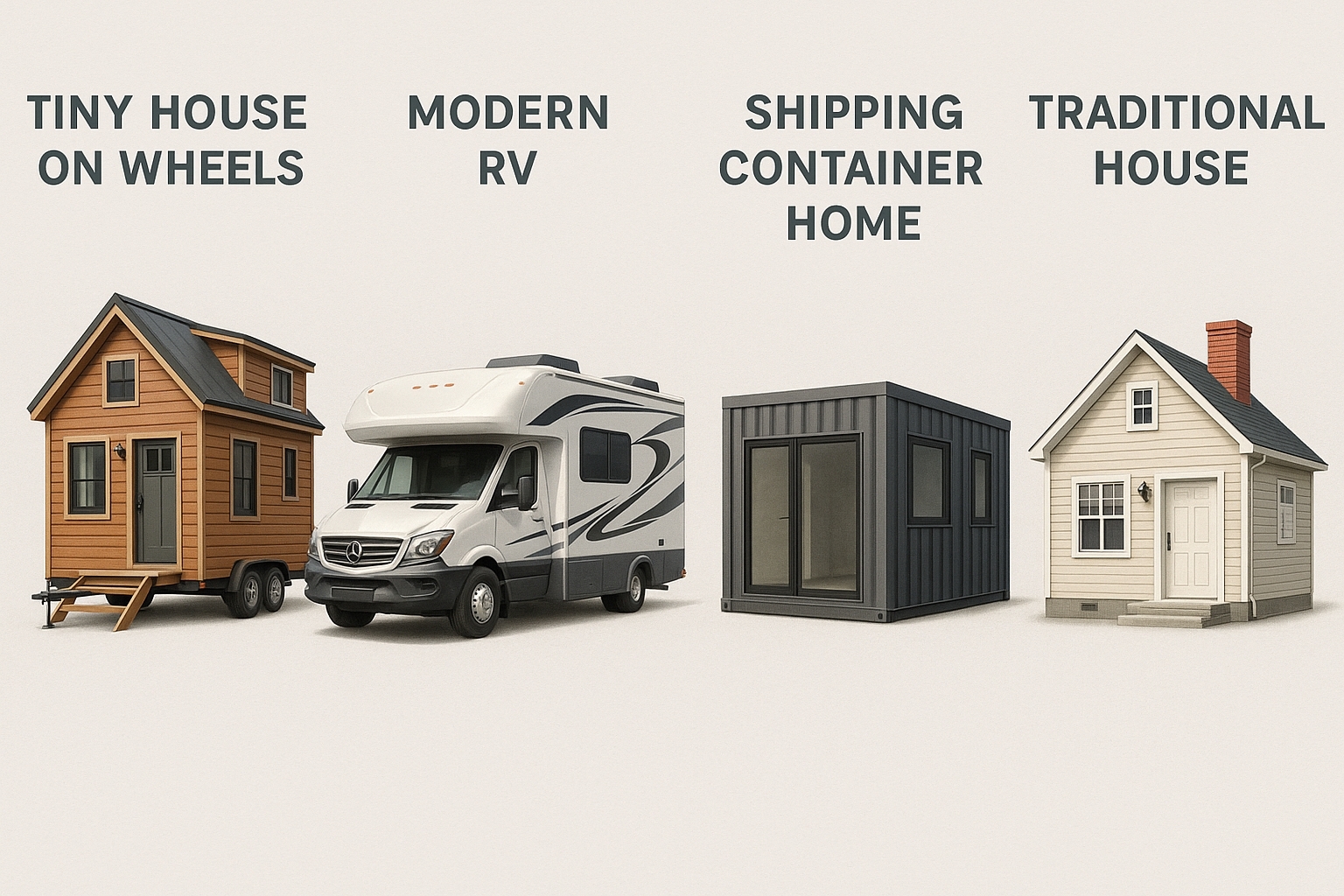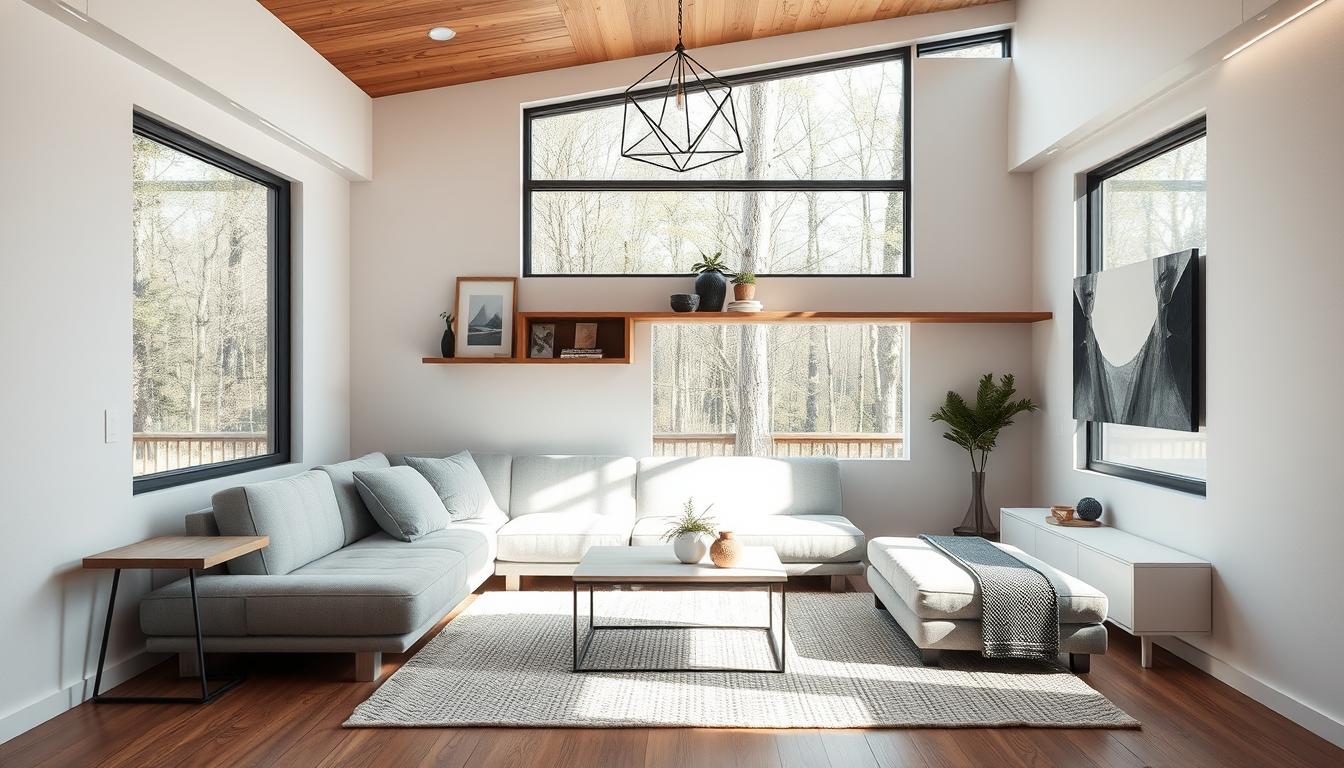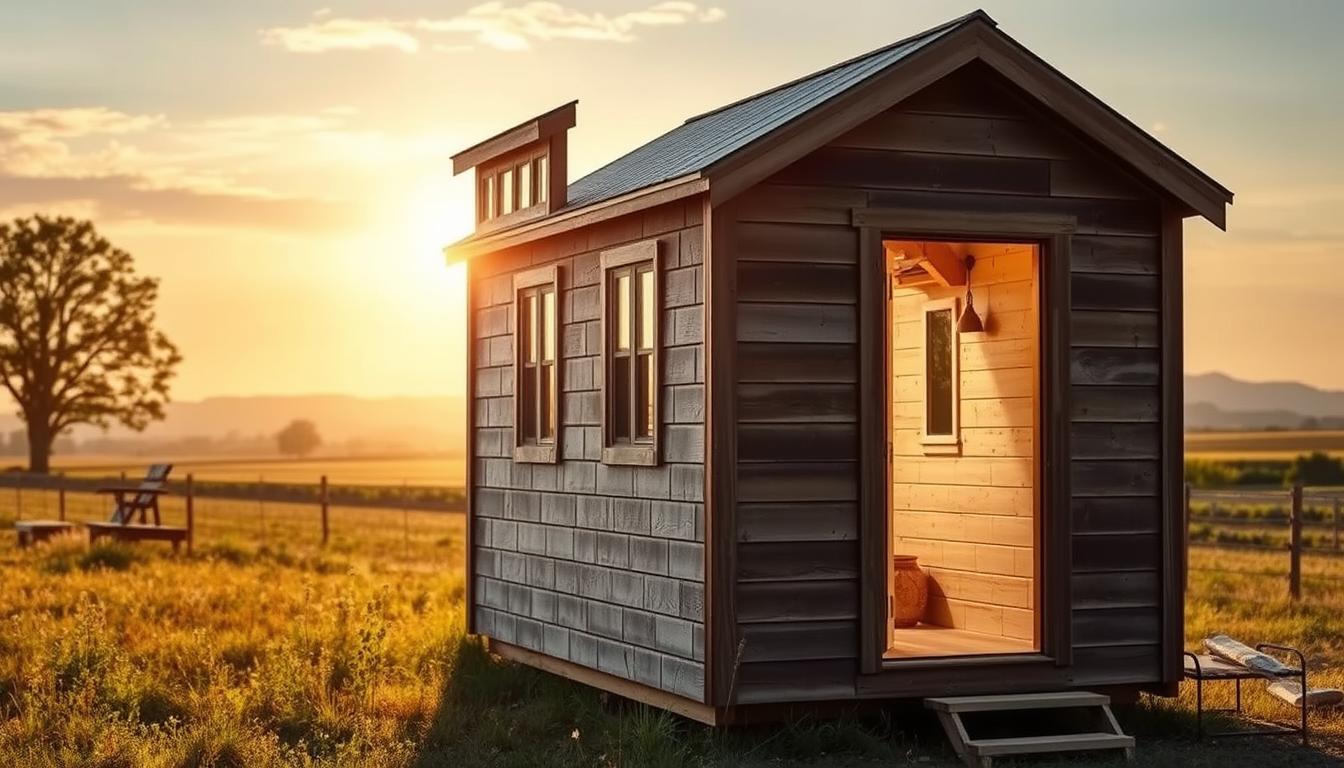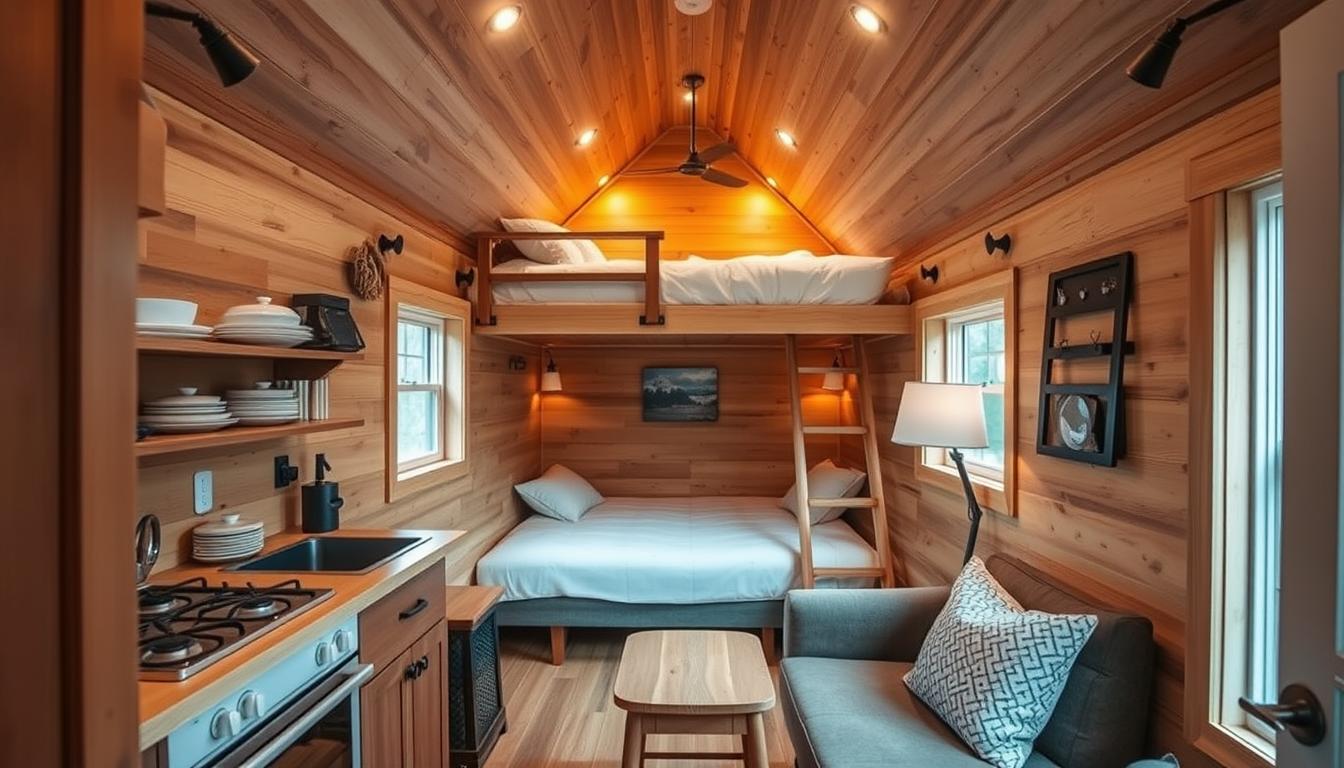Looking for a sustainable, minimalist way of living? A tiny house might be the perfect solution for you. Tiny houses are eco-friendly and energy-efficient, making them a great option for anyone looking to reduce their environmental impact. But how do you put a tiny house on land? In this step-by-step guide, we’ll walk you through the process of putting a tiny house on land for sustainable living. From legal considerations to sustainable living practices and off-grid solutions, we’ve got you covered. So, let’s dive in and learn how to put a tiny house on land!
Introduction
A tiny house is a type of compact living space that ranges from 100 to 400 square feet in size. These homes are designed to be functional and efficient, maximizing every inch of space. Tiny houses can be built on trailers for easy mobility or placed on a permanent foundation on land.
If you are interested in sustainable living and minimalism, then learning how to put a tiny house on land is essential. Before you can install your tiny home, it’s important to be aware of the legal and zoning considerations that may apply in your area. Properly designing and building your tiny house can also save you time, money, and headaches down the road. In this article, we will provide a step-by-step guide to help you put a tiny house on land for sustainable living.
Legal Considerations
When installing a tiny house on land, it’s important to be aware of zoning laws and regulations in your area. In some cases, tiny houses may be classified as recreational vehicles and can only be parked in designated areas. In other cases, they may be subject to the same regulations as traditional homes. To ensure that you are following the rules, you should check with your local zoning department.
Depending on your location, you may also need permits to install a tiny house on land. These can include building permits, electrical permits, plumbing permits, and more. Before beginning installation, make sure you understand what permits are needed in your area.
Tiny houses are subject to the same building codes and regulations as traditional homes. This means that your tiny house will need to meet safety and structural requirements, including fire safety, plumbing, and electrical codes. To ensure that your tiny house meets these requirements, work with a qualified builder who is familiar with your area’s building codes and regulations.
When looking for land to install your tiny house, it’s important to make sure that the land is suitable for your needs. Consider factors such as the size of the land, topography, soil type, and zoning regulations. You may also need to consider access to utilities, such as water, electricity, and sewer. Working with a qualified real estate agent can help you find land that is suitable for your needs.
III. Choosing the Right Location
Choosing the right location for your tiny house is crucial to ensure a comfortable and sustainable lifestyle. Here are some factors to consider when choosing a location:
Proximity to Work, Family, and Friends
Consider the distance from your work, family, and friends. Living far from your loved ones can be difficult, and long commutes can quickly become tiring.
Access to Amenities
Access to amenities such as grocery stores, hospitals, and schools is important for any homeowner. Make sure to choose a location that provides easy access to the amenities you need.
Climate
Think about the climate in the location you’re considering. If you’re not used to harsh winters or hot summers, it may be challenging to adapt to a new climate.
Environmental Impact
Consider the environmental impact of your location choice. Living off-grid in a remote location may seem appealing, but it can have a significant impact on the local ecosystem. Choosing a location closer to existing infrastructure may be a more sustainable option.
Land Size
The size of land you need for your tiny house will depend on your specific needs. Some tiny homes are built on trailers and can be moved from location to location, while others are built on a permanent foundation. You should work with a qualified builder to determine the size of land that is suitable for your needs.
Preparing the Land
Before you install your tiny house, you’ll need to prepare the land. This may include grading the land, removing trees or other obstacles, and installing a foundation. It’s important to work with a qualified contractor who is familiar with the requirements for installing a tiny house on land.
Sustainable Living Practices for Tiny Homes
Sustainability is at the core of tiny house living. In a tiny home, there are several energy-efficient options to consider, including solar panels, wind turbines, and geothermal heating and cooling. A qualified contractor can help you determine which option is best for your needs.
Water conservation is also essential in a tiny house. Some water conservation methods include low-flow fixtures, rainwater harvesting, and greywater systems. Working with an expert can help you determine which option is best for your specific situation.
Waste management is another crucial aspect of sustainable living in a tiny house. Some waste management strategies include composting toilets, recycling, and using non-toxic cleaning products. An expert can help you choose the best option that suits your needs.
Moreover, there are many other ways to make your tiny house more sustainable, including using eco-friendly materials, installing energy-efficient appliances, and incorporating natural lighting. A qualified contractor can provide you with the best options and solutions for your tiny house.
When designing and building your tiny house, keep sustainability in mind. With the right sustainable practices, you can reduce your carbon footprint and live a more eco-friendly lifestyle.
Designing and Building Your Tiny Home
Designing and building a tiny house is a complex process that requires specialized knowledge and skills. However, it can also be a rewarding experience for those who are handy and have some building experience. If you’re interested in building your own tiny house, there are many DIY plans and blueprints available online that can help you get started.
Choosing the right materials for your tiny house is essential for creating a safe and comfortable living space. Some popular materials for tiny homes include wood, metal, and concrete. It’s important to work with a qualified builder who can help you choose the right materials for your needs and ensure that your tiny house is structurally sound.
When building a tiny house, it’s important to design for maximum space efficiency. This includes incorporating features like built-in storage, lofted sleeping areas, and multi-functional furniture. Using lightweight materials can also help to maximize space and reduce the overall weight of your tiny house. A qualified builder who is familiar with these tips and tricks can help you create a safe and functional living space.
Decorating and furnishing your tiny house can be a fun and creative process. Choosing multi-functional furniture and space-saving storage solutions can help to maximize space and create a comfortable living area. Incorporating natural elements like plants and wood can also help to create a cozy and inviting atmosphere. Working with a qualified designer who is familiar with these tips can help you create a personalized and functional living space.
Off-grid Living Solutions
Opting for living off-grid is a popular choice among tiny house owners. This is a great way to reduce your environmental impact and live more sustainably. Here are some off-grid living solutions that you can consider for your tiny house:
Solar Panels and Alternative Energy Sources
Solar panels and other alternative energy sources are great options to provide power to your tiny house without relying on the grid. These systems are becoming more affordable and efficient, making them a practical choice for tiny house owners. You should work with a qualified contractor who is familiar with these options and can help you determine which is best for your needs.
Water Collection and Treatment Systems
Collecting and treating your own water is another option for off-grid living in a tiny house. Rainwater harvesting and greywater systems can provide a sustainable source of water for your needs. These systems can be simple or complex, depending on your preferences. You should work with a qualified contractor who is familiar with these options and can help you determine which is best for your needs.
Composting Toilets and Other Waste Management Options
Composting toilets and other off-grid options can provide a sustainable solution for waste management in your tiny house. These systems are eco-friendly and cost-effective, making them a great choice for tiny house owners. You should work with a qualified contractor who is familiar with these options and can help you determine which is best for your needs.
Living off-grid in a tiny house requires careful planning and preparation. You should work with a qualified contractor who is familiar with off-grid living and can help you determine which options are best for your needs. By considering these off-grid living solutions, you can reduce your environmental impact and live more sustainably in your tiny house.
Financing Your Tiny House
Financing a tiny house can be challenging, as many traditional lenders are not familiar with this type of housing. However, there are several options available, including:
1. Personal Loans
Personal loans can be a good option for financing a tiny house, especially if you have good credit. You can typically borrow up to $100,000, and the loan terms are usually between three and seven years. Interest rates are generally higher than other types of loans, ranging from 6% to 36%.
2. RV Loans
RV loans are another option for financing a tiny house, especially if your tiny house is built on wheels. These loans are offered by banks, credit unions, and online lenders. Interest rates are typically lower than personal loans, ranging from 4% to 12%. Loan terms are usually between 10 and 20 years, and you can typically borrow up to $150,000.
3. Home Equity Loans
If you own a home, you can use a home equity loan to finance your tiny house. This type of loan allows you to borrow against the equity in your home, and interest rates are generally lower than personal loans and RV loans. However, you’ll need to have enough equity in your home to qualify for this type of loan.
Budgeting for the costs of a tiny house is essential for ensuring that you can afford your new lifestyle. Some costs to consider include the cost of land, building materials, and installation. You should work with a qualified builder who can help you determine the costs associated with building and installing your tiny house.
Finding affordable land for your tiny house can be challenging, as many areas have strict zoning regulations and high land costs. However, there are several options available, including:
1. Rural Areas
Purchasing land in rural areas can be a more affordable option than buying land in urban or suburban areas. However, you’ll need to make sure that the land is suitable for a tiny house and that it meets zoning regulations.
2. Real Estate Agents
Working with a real estate agent who is familiar with tiny house living can be a good way to find affordable land. These agents can help you navigate zoning regulations and find land that is suitable for a tiny house.
3. Land-Sharing Opportunities
Land-sharing opportunities allow you to park your tiny house on someone else’s property in exchange for rent or other compensation. You can find these opportunities through online marketplaces and social media groups.
Overall, it’s important to work with qualified professionals and do your research when financing and finding land for your tiny house. With the right planning and preparation, you can make your tiny house dreams a reality.
Frequently Asked Questions
How much does it cost to build a tiny house?
The cost of building a tiny house can vary widely depending on the size, materials, and location. However, on average, the cost of building a tiny house ranges from $20,000 to $50,000. Keep in mind that this is only an estimate and the cost can be higher or lower depending on your specific circumstances.
What are the benefits of living in a tiny house?
Living in a tiny house has many benefits, including lower living costs, minimal maintenance, and a simpler lifestyle. Tiny houses also have a smaller environmental footprint than traditional homes, making them a more sustainable choice for those interested in eco-friendly living.
What are the disadvantages of living in a tiny house?
While there are many benefits to living in a tiny house, there are also some disadvantages. These include limited space, limited storage, and limited privacy. Additionally, tiny houses may not be suitable for families with children or people who require a lot of indoor space.
How do I hook up utilities to my tiny house?
Hooking up utilities to your tiny house will depend on your location and the type of utilities you require. You should work with a qualified contractor who is familiar with your area’s utility requirements. Some common utilities you may need to hook up include water, electricity, sewage, and propane.
How do I insure my tiny house?
Insuring a tiny house can be challenging, as many insurance providers are not familiar with this type of housing. However, there are several options available, including RV insurance and homeowner’s insurance. You should work with a qualified insurance provider who is familiar with insuring tiny houses to determine the best coverage for your specific needs. Keep in mind that insurance coverage may vary depending on the type of tiny house you have and how you use it.
Conclusion
Congratulations on learning how to put a tiny house on land for sustainable living. You now have all the necessary knowledge to take the leap towards a more affordable and eco-friendly lifestyle. With careful planning and preparation, you can create a safe, comfortable, and sustainable living space that meets your needs and fits your lifestyle. Remember to always follow the proper legal considerations and choose a location that is both practical and sustainable.
Don’t forget to explore our website for more information and resources on sustainable living and alternative housing. We offer a range of articles and guides to help you make the most out of your tiny house journey. With our help, you can achieve your dreams of living a simpler, more sustainable life. So, what are you waiting for? Start planning your tiny house today!
Join our community today by subscribing to our newsletter and stay updated with the latest trends and practices in sustainable living!
As someone who has been passionate about sustainable living for over a decade, I have gained extensive experience in the design and construction of eco-friendly homes. After completing my degree in Environmental Science, I worked for several years in the sustainable building industry, where I gained hands-on experience in designing and building energy-efficient homes. In addition, I have conducted extensive research on the environmental impact of traditional homes versus tiny homes, citing relevant studies such as the 2019 study by the University of Texas on the carbon footprint of housing. My passion for sustainable living is what drove me to write this article and share my knowledge with others who are interested in living a more environmentally friendly lifestyle.










